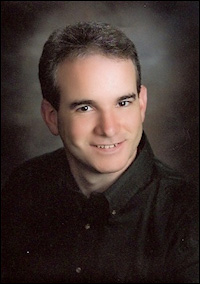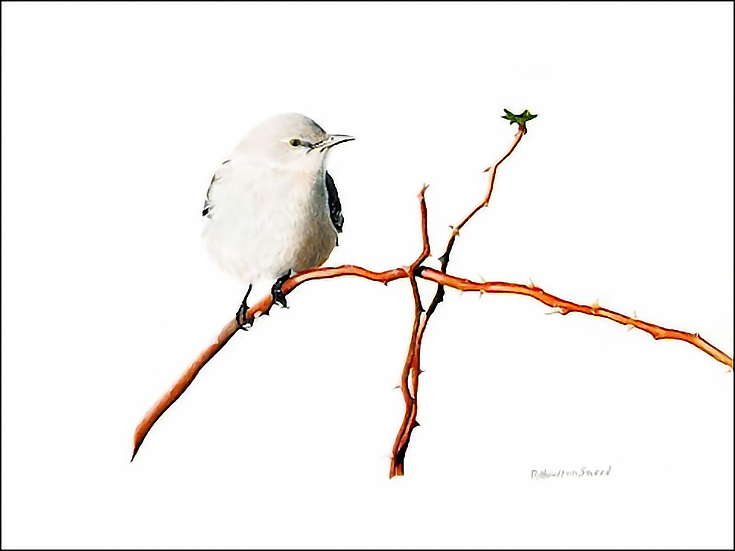
In today’s interview, Robert explains (among other things) why the eyes are key to creating stunning pet portraits, and why pricing your artwork should be based upon your individuality and personal expenses. . . not the pricing structure of other artists.
Alyice: How did you find your artistic voice?
Robert: I think perhaps it was maybe a combination of life experiences, my interests and opening up and trying different directions. I’ve always been, as long as I can remember, fascinated with the creative process. For the most part I mostly created art based on my interests and as a result my artistic voice just kind of showed itself without me really realizing it. I didn’t really think in terms of having a creative voice per say. I just knew that I enjoyed what I was doing and that’s all that mattered.
Alyice: You state, in your artist statement, that the inspiration for your art pieces comes from many sources: life, materials, music, and even other artists. Can you tell us how you protect yourself from accidently taking the work of another artist and implementing it into your own artwork?
Robert: This is a tough one to explain.
For me the end result of inspiration is not to create artwork that looks like the work of another artist. In other words certain artists inspire me because I can relate to how they got to where they are in their career and or skill level. Being that I’m mostly a self taught artist I tend to get most of my “can do” inspiration from other artist who are self taught and traveled down a similar path as mine.
Alyice: One of the services you offer is custom pet portraits. Can you share with us how you gained the confidence in your skills, as an artist, to start offering this service?
Robert: Gaining the confidence to offer custom artwork like pet portraits was a bit of a challenge for me. I was caught between I can do this and what if it’s not good enough. I believe the reason being is that with custom work, someone else, being the client, had to happy with the end result. It wasn’t just about whether or not I was happy with the outcome.
With non custom work I wasn’t as concerned about whether everyone else liked the end result. As long as I was happy with the end result that’s pretty much all that mattered. My advice is that you should never say no to a project out of fear of the challenge. I found that I gained a little more confidence after each portrait I completed.
Alyice: How did you come up with a profitable pricing structure when it comes to your custom portraits?
Robert: Creating a pricing structure can be a challenge for pretty much anything. Art is no exception. For the most part my pricing is determined by medium, size, cost of materials and what the local market can handle.
First off I start with what the materials cost. This would include the painting or drawing surface, medium and tools like brushes or pencils. For me a painting is going to cost more to create than a drawing because the materials are more expensive. I also charge more for a commission because it is custom work.
I try not to concern myself too much with what other artists are charging. To me that gets confusing because everyone’s situation, style, or talent is different. I believe the value you place on your work is an indication of how successful you feel.
Alyice: One of the ways you create your custom pet portraits is through client photographs. Can you share how you go about using a photograph as the basis of your work?
Robert: Working from photos can be a challenge. If I’ve been commissioned to paint a pet portrait I prefer, if at all possible, to take my own photos to use alongside any photos the client may have provided. Of course taking my own photos is not always possible for various reason like the distance may be too far to drive or the pet may have passed away.
If it’s a situation where the client’s photo is too dark or small or if the coloring is off I will usually let the client know and request that they take more photos, if possible. If other photos are not possible, I will scan the photo and make adjustments on the computer. If need be, I will also resort to using reference material that I have collected over time.
Something else I do is to show the client photos of my step-by-step process as I create the portrait. That way the client can provide input as I work and that helps to assure that I’m headed in the right direction. For me it’s easier to make adjustments or corrections early in the process than try to correct a finished painting.
Something I believe helps, as I have done on my website, is to educate the client about the importance of good quality reference photos and how to go about acquiring them.
Something I would also like to mention concerning using a photograph as the basis of your work. Photos are flat two dimensional representations of a three dimensional world. So if you paint an exact copy of a photo there is a good chance your painting will end up flat with little-to-no depth. This is where it pays to know your subject well. For me to come in contact with the pet directly, helps me tremendously from the standpoint of what the animal looks like and also it’s personality. Knowing a pet’s personality really helps me to bring the portrait alive.
Alyice: What is your process like once you get the okay to begin work on a new portrait?
Robert: My basic process for creating any subject matter including portraits is as follows:
First I begin with a pencil drawing. This helps me pick out the details and get the proportions and size correct.
Then I transfer the drawing to the painting surface and start painting the portrait with a single tone. This tone is usually derived from the overall tone of the subject or the subjects surroundings. When that’s established, I block in the different colors.
Then I start painting the details. With pet portraits, or any animals for that matter, I always paint the eyes first and go out from there. When I get the eyes established everything else falls into place. To me the eyes are one of the things that makes the portrait come alive and helps to show the true personality of the animal.
Alyice: If an artist wanted to start offering custom artwork himself, what advice would you give?
Robert: If someone commissions you to do custom artwork don’t worry about whether your work is going to be good enough. The client commissioned you because they like what you do. If they didn’t think your work was good enough, for them, they would not have asked you to begin with.
That being said, communication is very important. Sometimes the client knows exactly what they want. Other times they are not sure. Don’t be afraid to make suggestions. I have found that a lot of people appreciate this.
For more on Robert, please visit his website at www.rhsneed.com.
This post may contain affiliate links.



